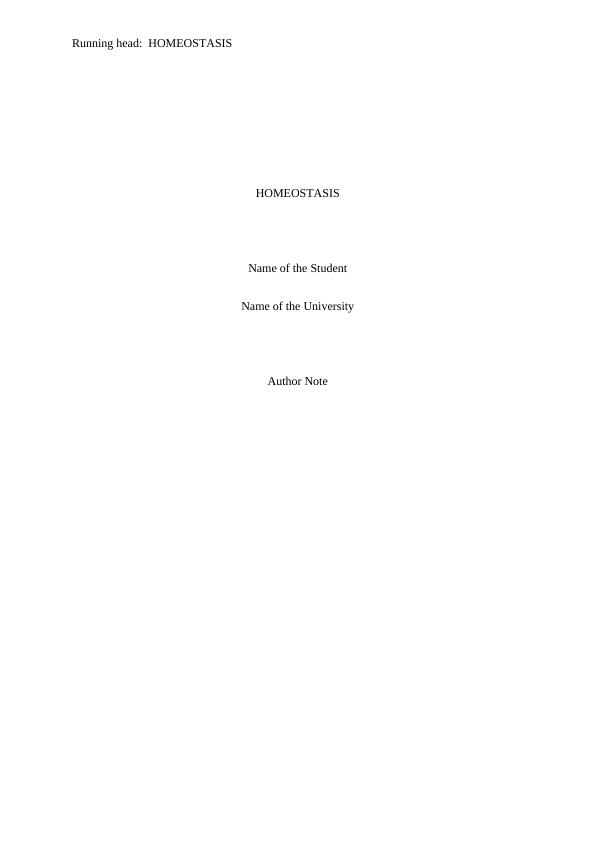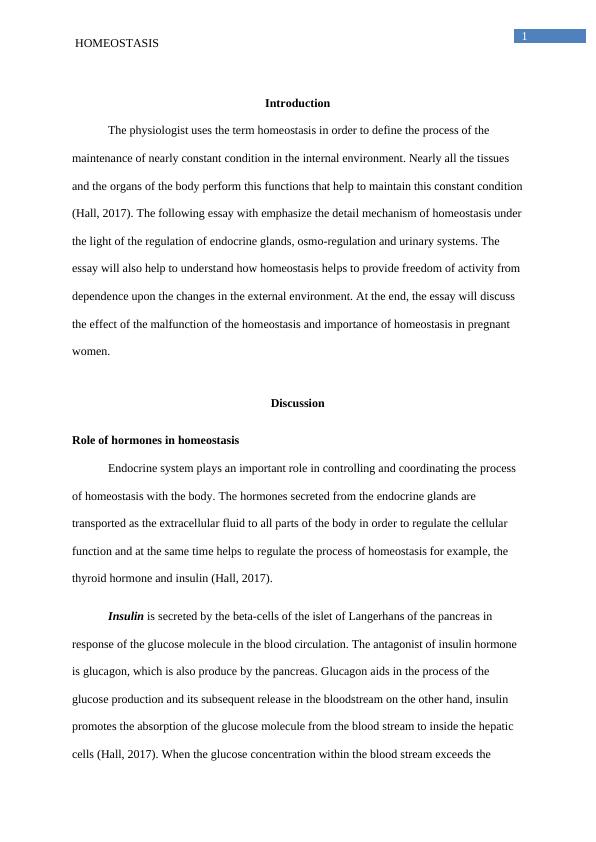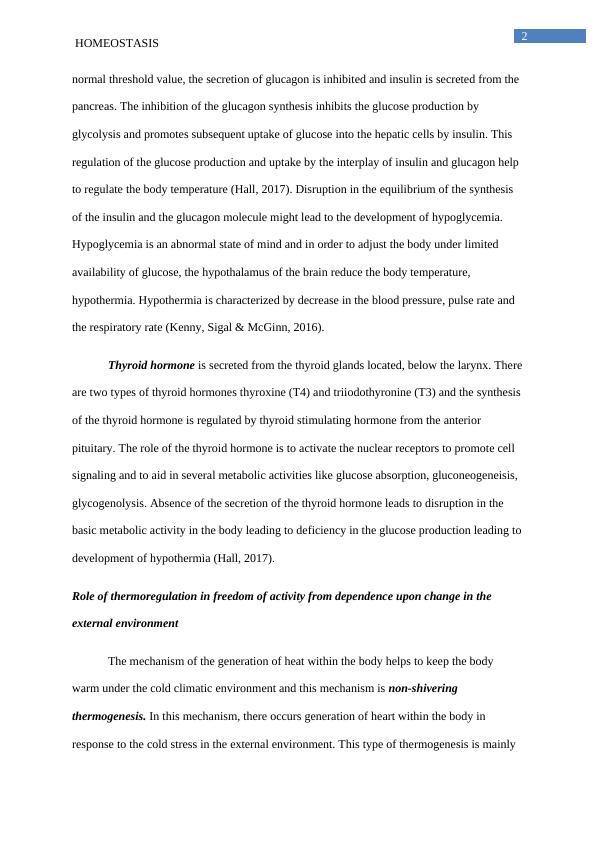Homeostasis: Mechanism, Regulation, and Importance
Explain the concept of homeostasis and its importance in maintaining a dynamic range of environmental qualities. Discuss the drawbacks of having a set point instead of a working range for body temperature. Explore the role of hormones in homeostatic processes and the consequences of their disruption. Analyze how homeostasis allows for greater freedom of activity in the outside world.
Added on 2023-04-25
About This Document
Homeostasis: Mechanism, Regulation, and Importance
Explain the concept of homeostasis and its importance in maintaining a dynamic range of environmental qualities. Discuss the drawbacks of having a set point instead of a working range for body temperature. Explore the role of hormones in homeostatic processes and the consequences of their disruption. Analyze how homeostasis allows for greater freedom of activity in the outside world.
Added on 2023-04-25
End of preview
Want to access all the pages? Upload your documents or become a member.



